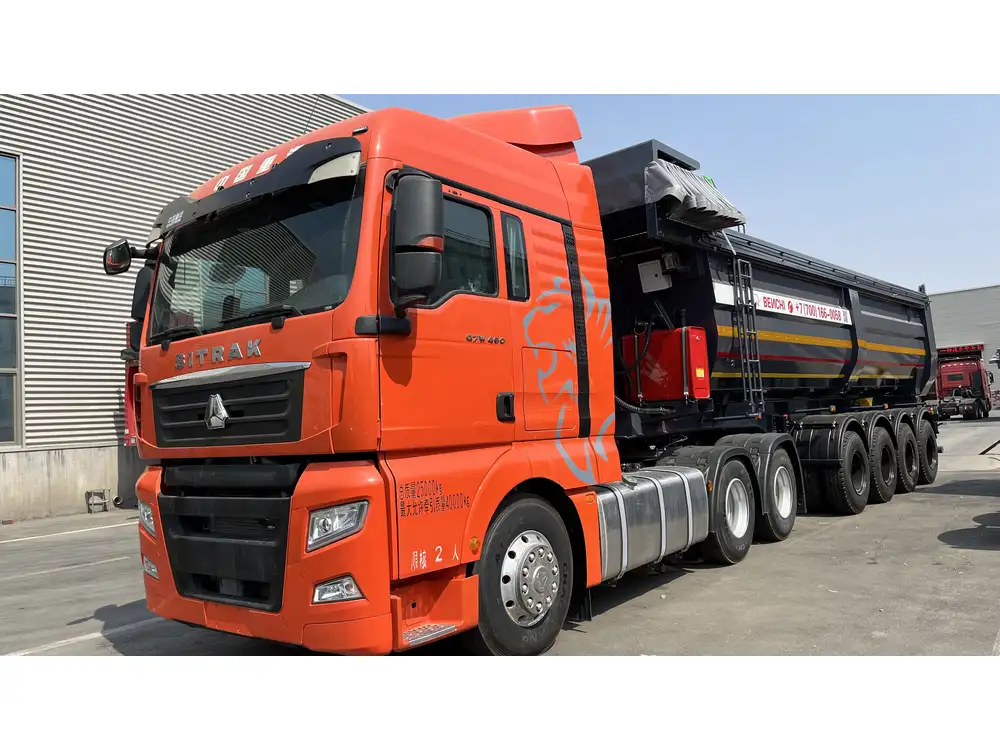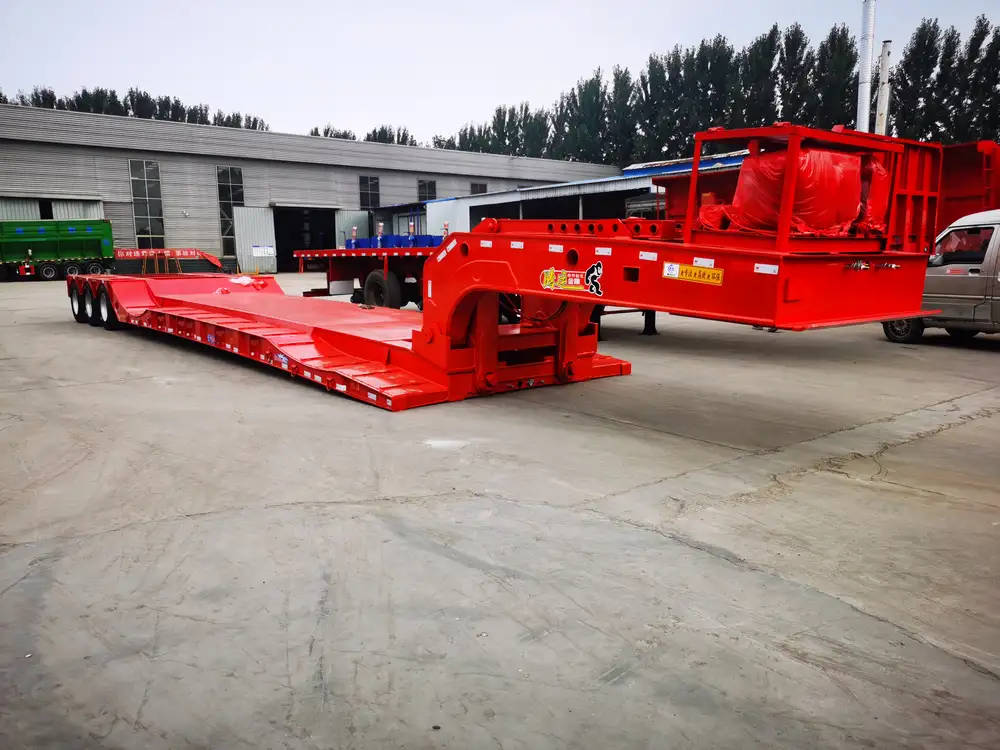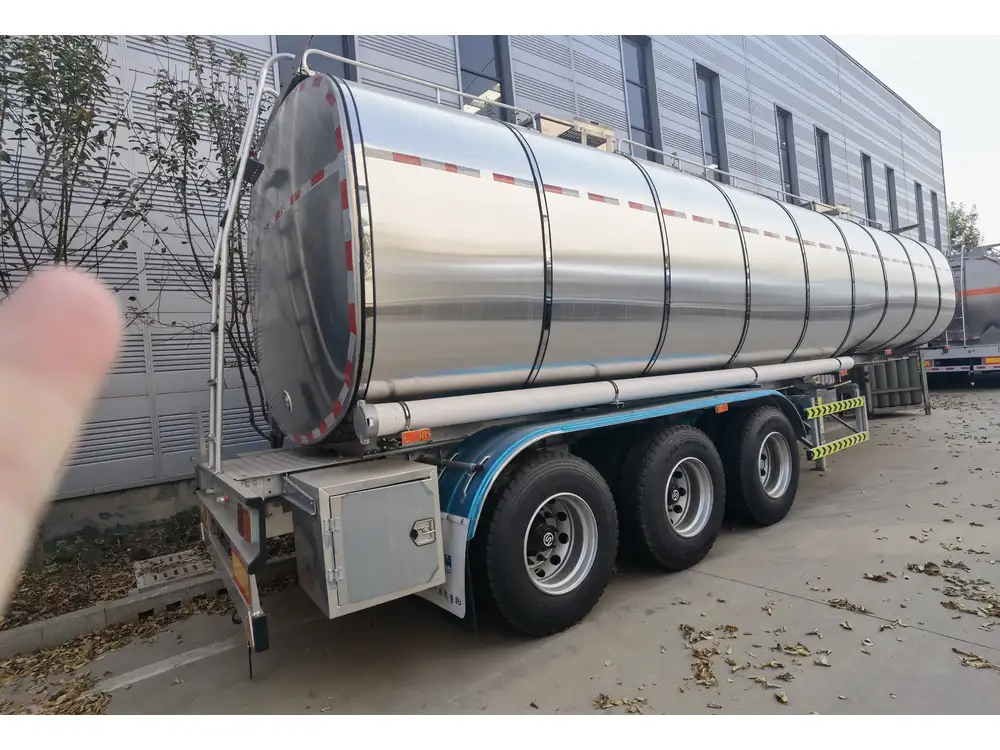Transportation logistics is a multi-faceted industry where the efficacy of equipment plays a pivotal role. Among various transport options, flatbed trailers stand out due to their versatility and adaptability. When considering whether flatbed trailers can handle specific cargo, a commonly raised question is: Can you haul dirt on a flatbed trailer? This article delves into this question, analyzing the nuances, techniques, and considerations involved in hauling dirt using flatbed trailers.
Understanding Flatbed Trailers and Their Features
Flatbed trailers are distinct for their open design, featuring a flat loading surface without sides or a roof. This design fundamentally allows for a plethora of cargo types to be transported, including but not limited to:
| Feature | Description |
|---|---|
| Versatility | Ideal for various loads such as machinery, building materials, and dirt. |
| Accessibility | Easy loading and unloading from the top, sides, or rear. |
| Stability | Equipped with multiple tie-down points to secure various cargo types. |
Flatbed trailers’ characteristics afford opportunities to transport bulk materials, such as dirt, but there are numerous intricacies to consider.
Assessing the Load: Dirt Types and Transport Suitability
Before you embark on hauling dirt, it’s crucial to categorize the types of dirt you’ll be transporting and their implications on the flatbed trailer’s capacity and stability.

Types of Dirt
Topsoil
- Description: A nutrient-rich, uppermost layer of soil.
- Usage: Commonly used in gardening and landscaping.
Fill Dirt
- Description: Generally consists of subsoil used to fill in spaces.
- Usage: Vital for construction projects.
Sand
- Description: Grainy particles of rock and mineral.
- Usage: Used in construction, landscaping, and making concrete.
Clay
- Description: Heavy, dense soil.
- Usage: Suitable for tiling and foundation purposes.
Load Limits and Weight Considerations
When hauling any type of dirt, understanding weight limits is paramount. Flatbed trailers come in various sizes, and their weight capacity can significantly differ. A standard flatbed trailer typically has a capacity of 48,000 to 65,000 pounds. Here are a few guidelines:
| Dirt Type | Estimated Weight per Cubic Yard | Weight for 10 Cubic Yards |
|---|---|---|
| Topsoil | 1,200 lbs | 12,000 lbs |
| Fill Dirt | 1,400 lbs | 14,000 lbs |
| Sand | 2,500 lbs | 25,000 lbs |
| Clay | 2,800 lbs | 28,000 lbs |
Legal Considerations and Compliance
When hauling dirt, understanding state regulations is crucial. Most jurisdictions impose restrictions on the maximum weight for transport vehicles. This includes the combined weight of the trailer, cargo, and towing vehicle. Violating these regulations can result in substantial fines and penalties.

Preparing for the Haul: Equipment and Best Practices
Efficient loading and safe transport are paramount considerations ahead of hauling dirt. Here are essential preparatory guidelines:
Equipment Check
Trailer Condition
- Inspect the trailer for any damage that could affect its performance. Look for cracks in the frame, secure fastening points, and a tight hitch.
Tire Inspection
- Ensure that the tires are properly inflated and in good condition to maintain stability.
Weight Distribution
- Properly distribute the weight of dirt on the flatbed trailer. An uneven load can lead to swaying, making the vehicle harder to control.
Load Securement
- Tie-Downs: Equip your flatbed with appropriate tie-downs to secure the dirt. Chains, straps, and tarps can help prevent spillage while transporting.
- Canvas Tarps: In cases where dirt is prone to blowing away, utilizing heavy canvas tarps can effectively manage dust and dirt displacement.

The Loading Process: Techniques and Tips
When loading dirt onto a flatbed trailer, follow these best practices:
Selecting Loading Equipment
- Excavator or Backhoe: Use an excavator or backhoe for bulk loading, particularly necessary for heavier dirt types.
- Skid Steer Loader: Ideal for smaller batches, assisting in precise movement without the need for larger machinery.
Methodical Loading
- Plan Your Load: Outline a plan on how you’ll load the dirt. An effective loading order can prevent unnecessary shifts in weight.
- Layering: When loading loose dirt, layer the cargo for stability, ensuring even weight distribution across the trailer.

Safety Considerations While Hauling
Safety should never be compromised when transporting dirt. Here are actionable tips to ensure a smooth and secure haul:
Driving Techniques
- Avoid Sudden Movements: Gradually accelerate and brake to maintain stability and prevent the load from shifting.
- Cornering: Navigate corners carefully; sharp turns may cause the load to shift, leading to potential accidents.
Weather Conditions
- Rain and Mud: Be especially cautious during adverse weather conditions like rain, which can make the roads slippery. Adjust driving speeds accordingly.

Legal Compliance
- Weight Checks: Before embarking, weigh the loaded trailer at a certified scale to ensure compliance with loading regulations.
Unloading: Best Practices and Techniques
After successfully reaching your destination, effective unloading practices ensure that all safety and efficiency standards are met:
- Site Assessment: Assess the unloading area before beginning. Determine ground stability and clear any existing obstacles.
- Equipment Preparation: Have the necessary equipment ready for unloading, such as an excavator or a skid loader.
- Safety Gear: Always wear appropriate safety gear, including gloves, hard hats, and reflective vests.
Conclusion: Mastering the Art of Dirt Transport on Flatbed Trailers
Transporting dirt on flatbed trailers is not only feasible but practical, offering robust solutions for various transport needs. By understanding the complexities of dirt types, adhering to legal weight restrictions, ensuring proper load management, and implementing comprehensive safety measures, you can successfully navigate the intricacies of hauling dirt.
Ultimately, with the right preparation, equipment, techniques, and knowledge about compliance, one can unlock the potential of flatbed trailers for dirt transport, driving business efficiency and operational excellence into the future. Whether you are in construction, landscaping, or any field requiring transport of loose materials, flatbed trailers can provide a versatile solution when properly utilized.

Further Queries?
Should you have further questions about hauling dirt on flatbed trailers or wish to explore more about the best types of trailers for specific jobs, feel free to reach out—we’re here to guide you and enhance your operational capabilities.



